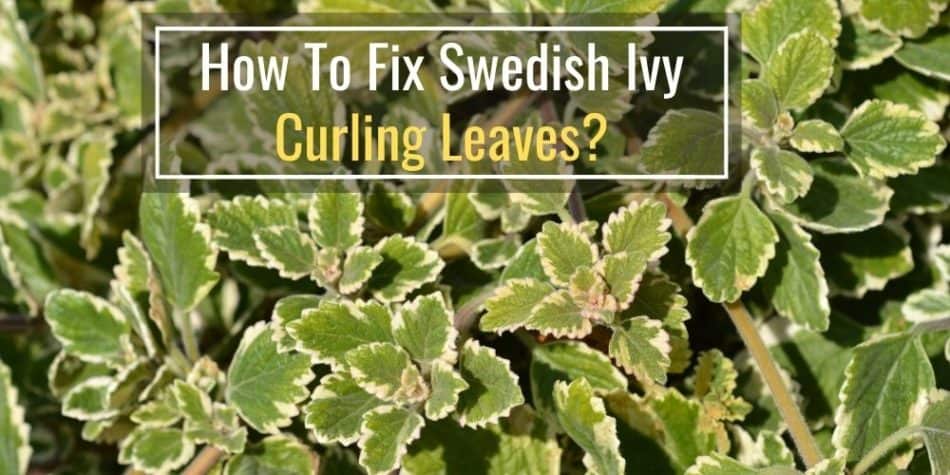Ivy plants are great plants to have either outdoors or indoors in order to liven up a space. Whether you have an English Ivy plant climbing your trellis outside or a Swedish Ivy plant indoors, ivy plants will add beautiful greenery year round.
However, a common issue with ivy plants is when the leaves start to curl. So let’s cover how to fix curling leaves on a Swedish Ivy plant.
Swedish Ivy (Plectranthus verticillatus) leaves will curl as a result of overwatering, underwatering, excessive light, dry air, heat, pests, excessive fertilizer, tap water, or disease. The best solution is to place the Swedish Ivy in an area that receives bright, indirect sunlight and water every 1 to 2 weeks. Overtime the Swedish Ivy plant’s leaves will uncurl once it receives the right growing conditions.
The good news is that curling leaves is an early sign of stress with the ivy plant. So there is still plenty of time to diagnose and fix the issue.
What Is a Swedish Ivy
Swedish ivy plants are a great houseplant since they grow well indoors and require little upkeep. The ivy will grow new stems with lots of leaves before cascading over the edge of the planter as the stem gets too heavy to support.
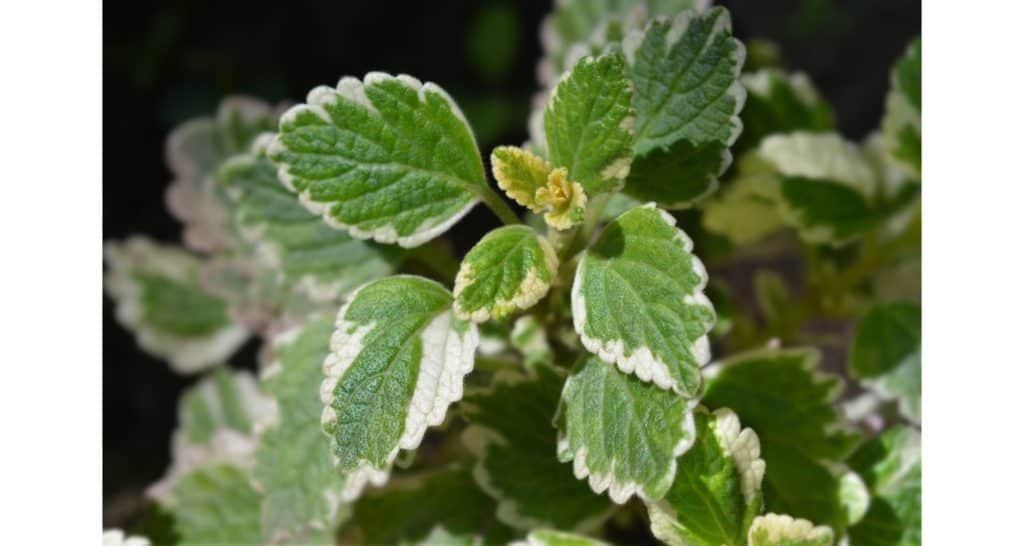
Swedish ivy plants are great beginner friendly house plants since they will grow and bloom in a variety of soil, watering, and light conditions.
The leaves of a Swedish ivy plant can have variegated leaves with usually white edges and green centers. Typically these plants will also produce white or pale lavender flowers in late spring or early summer.
Swedish ivies look great in a hanging basket or on the edge of a shelf so the stems can gracefully cascade down. A Swedish ivy plant should be placed in bright, indirect sunlight such as near a windowsill.
Causes Of Swedish Ivy Leaves Curling
There are many causes for the Swedish ivy leaves to curl. Here are the most common reasons along with potential solutions.
Underwatering Swedish Ivy Can Cause Curling Leaves
Swedish ivies are beginner friendly plants but they still need to be watered on a regular schedule.
A lot of houseplant learners have a propensity to make the blunder of under-watering their pothos or ivy leaves. They think that because it’s a low-maintenance houseplant, that it’s basically un-killable.
Underwatering will cause the leaves to curl as the plant tries to conserve as much moisture as possible.
The Swedish ivy’s leaves may also look a little dry or crunchy which is a telltale sign that underwatering is the issue.
In order to determine when to water a Swedish ivy, place your index finger 1 inch into the soil. I stick my finger in the soil up to my second knuckle.
- DO NOT water the Swedish ivy if the soil is still moist
- Water the Swedish ivy if the soil is dry
As long as the soil is moist 1 inch or deeper than the plant can drink water when it needs to.
Overwatering Swedish Ivy Can Cause Curling Leaves
Overwatering the Swedish ivy can cause the leaves to curl due to root rot. Overwatering a plant will cause the soil to be moist or wet while never truly drying out in between waterings.
This excess moisture will cause bacteria and fungus to grow which will eventually lead to root rot.
Once the plant’s roots start rotting, all the water and nutrients needed by the Swedish ivy will not be unable to reach the plant’s stems and leaves.
Overwatering will cause the leaves to curl as the plant tries to conserve as much moisture as possible since it is unable to draw up water from its rotting roots.
In order to determine when to water a Swedish ivy, place your index finger 1 inch into the soil. I stick my finger in the soil up to my second knuckle.
- DO NOT water the Swedish ivy if the soil is still moist
- Water the Swedish ivy if the soil is dry
As long as the soil is moist 1 inch or deeper than the plant can drink water when it needs to.
Water Drainage To Prevent Root Rot From Overwatering
A good way to help prevent root rot is to place the Swedish ivy plant into a pot with drainage holes.
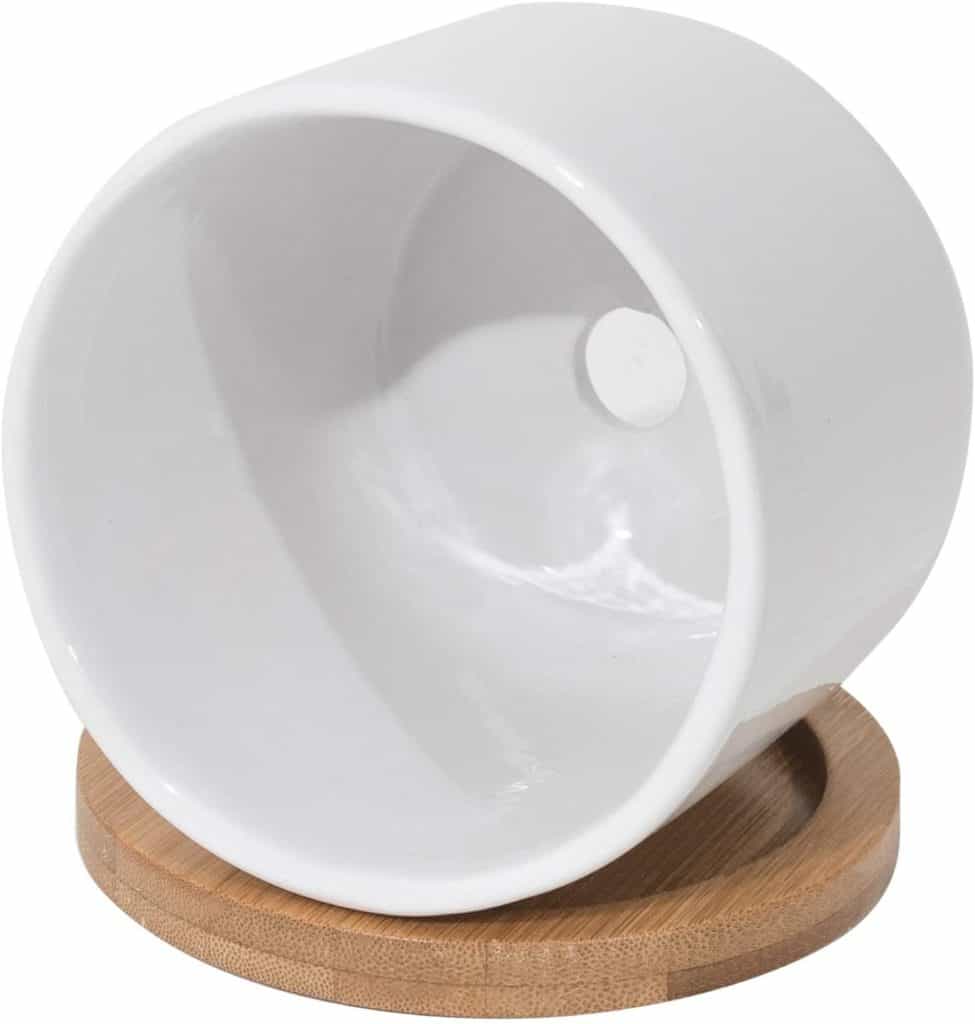
These ceramic pots on Amazon come with drainage holes and trays to catch the excess water. I use pots that have drainage holes and trays for all my indoor house plants.
Swedish Ivy Leaves Can Curl Due To Excessive Light
Excessive light is tied to lack of water. If your window lets in a lot of light then the temperature rises which causes the water to evaporate more quickly. As a result, the leaves can curl.
The best solution is to move the Swedish ivy to another location or further away from the window. As long as the Swedish ivy plant is not getting direct sunlight than the plant should be fine.
Remember that hotter or sunnier months may cause the Swedish ivy to dry out faster so the plant may need to get watered more frequently.
In order to determine when to water a Swedish ivy plant, place your index finger 1 inch into the soil. I stick my finger in the soil up to my second knuckle.
- DO NOT water the Swedish ivy plant if the soil is still moist
- Water the Swedish ivy plant if the soil is dry
Swedish Ivy Leaves Can Curl Due To Insufficient Light
If the Swedish ivy plant is healthy and receiving enough light then it should have broad, flat leaves that are naturally grown in a manner that faces the source of light.
On the other hand, if the Swedish ivy leaves are curling towards or reaching in the direction of the light, it is a signal that the plant is not receiving enough light.
A simple solution is to place the Swedish ivy plant closer to the window or light source so it is receiving more light. The leaves should flatten out as it receives as much sunlight as it needs.
Heat Can Cause Swedish Ivy Leaves to Curl
Similar to the issues of dry air or excessive light, a hot climate will cause the water to evaporate more quickly. The Swedish ivy plant will not receive as much water as it needs if the climate is too hot, which will cause the leaves to curl.
The Swedish ivy’s leaves may also look a little dry or crunchy which is a telltale sign that the plant is not receiving enough water.
Make sure that the plant is not sitting in direct sunlight, a warm room or location such as near a radiator or heater during winter. The plant life will start to curl losing at the tips if temperatures aren’t in the range of 65-85 ºF (18-29°C).
The best solution is to move the plant to a cooler location and water it more frequently if the climate is warmer than usual.
Mealybugs Can Cause Swedish Ivy Leaves to Curl
Mealybugs (Pseudococcidae) are an unarmored scale insect that are usually found in damp and warm environments.
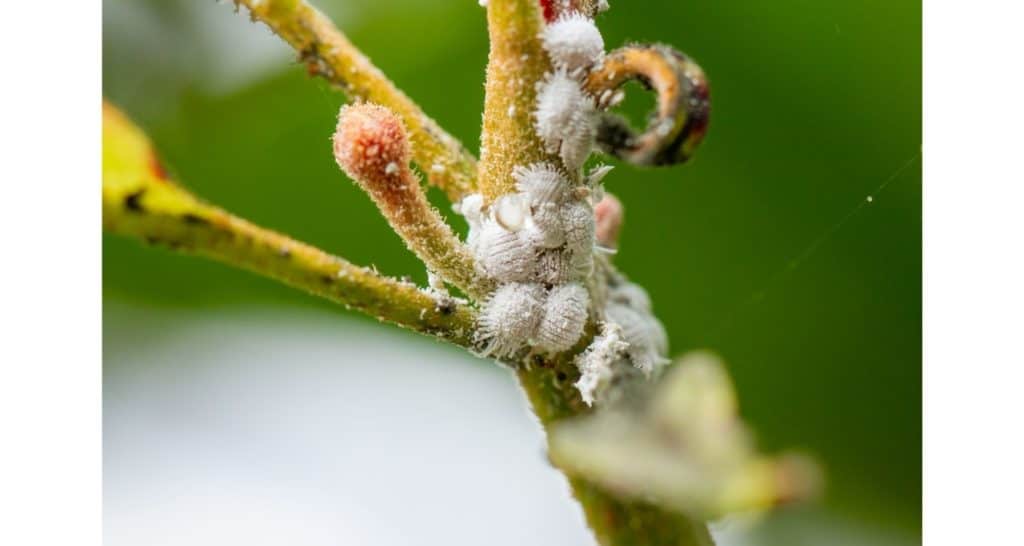
Mealybugs feed on the plant’s juices which will stunt their growth and cause the leaves to curl.
A sign of mealybugs is a sticky liquid on the stems or leaves.
Some ways to get read of mealybugs are to use their natural predators, ladybugs or lacewings, or use a homemade insecticide spray. Read this guide to learn how to make a homemade soapy spray that is safe to spray on plants.
Make sure to spray directly onto the mealybugs in order to remove them with the homemade soapy spray. Apply as many times as needed.
Aphids Can Cause Swedish Ivy Leaves to Curl
Aphids are pear shaped, soft bodied insects which can be black, brown, red or green in color. They can be spotted with the naked eye and tend to reproduce under the folds of leaves.
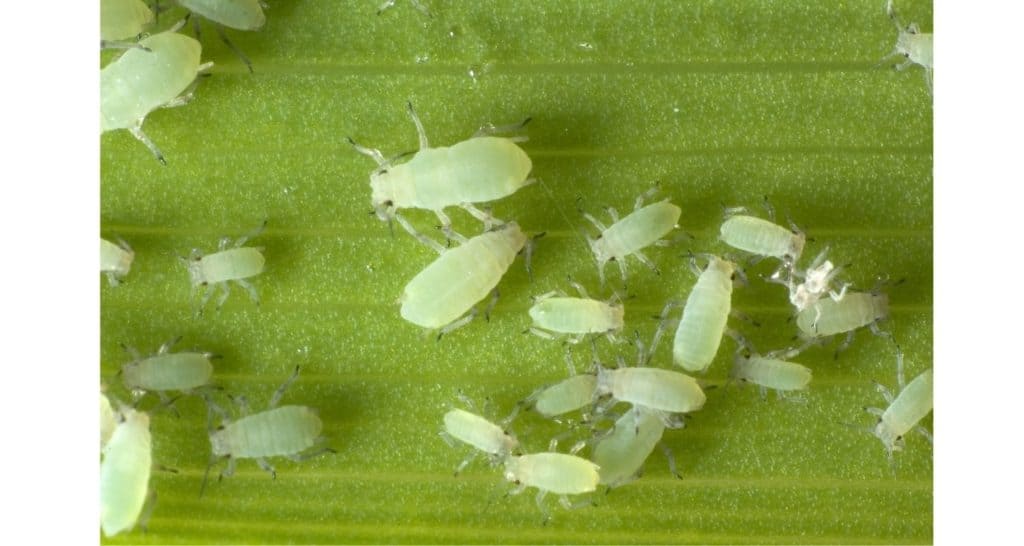
Aphids also tend to reproduce near the center of immature or new leaves as the leaves are bunched together and offer a lot of covered areas.
Some ways to get read of mealybugs are to use their natural predators, ladybugs or lacewings, or use a homemade insecticide spray. Read this guide to learn how to make a homemade soapy spray that is safe to spray on plants.
Make sure to spray directly onto the aphids in order to remove them with the homemade soapy spray. Apply as many times as needed.
Whiteflies Can Cause Swedish Ivy Leaves to Curl
Whiteflies are the insects that are usually found on the underside of leaves. They are small and commonly found in white color, which is why they’re called whiteflies.
Some signs of whiteflies are yellow and spotted leaves. You will also be able to see whiteflies.
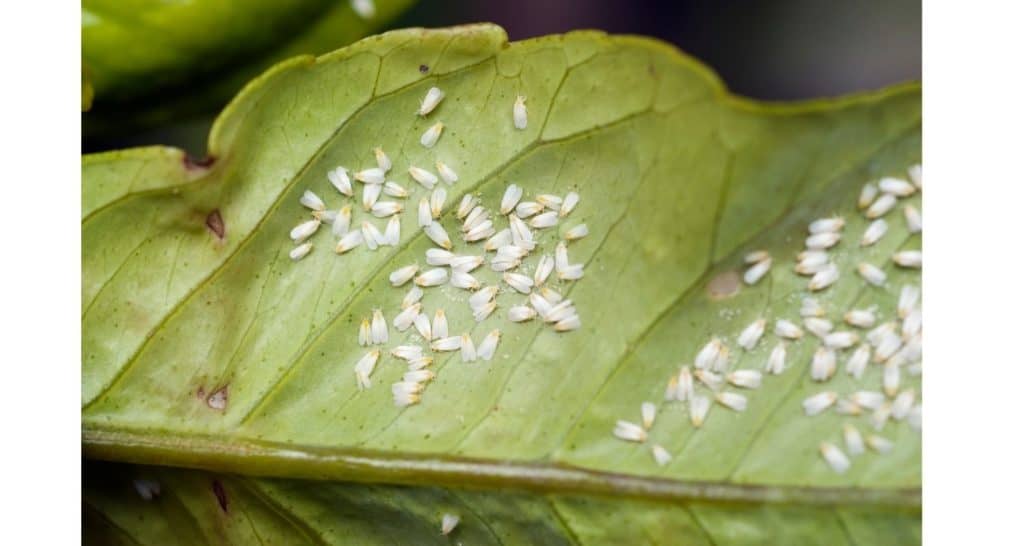
The best way to get rid of whiteflies are to use a homemade insecticide spray. Read this guide to learn how to make a homemade soapy spray that is safe to spray on plants.
Make sure to spray directly onto the whiteflies in order to remove them with the homemade soapy spray. Apply as many times as needed.
Summary: How To Fix Swedish Ivy Leaves From Curling
Here are the main ways to fix curling leaves on a Swedish ivy plant:
- Make sure the plant is free of pests by closely inspecting the plant. Use insecticide spray as needed.
- Make sure the plant is receiving adequate amount of sunlight
- Make sure the plant is not underneath a heat vent, radiator, or other hot location
- Make sure to water the Swedish ivy plant when the soil feels dry about 1 inch deep
Once the Swedish ivy receives the right amount of light, water, and is pest free then the Swedish ivy plant should thrive.
Taking care of a Swedish ivy plant requires occasional check-ins to make sure it is receiving enough water and not showing any signs of stress. If the plant’s leaves are curling then it is telling us it needs a little attention so it can continue to grow and produce beautiful flowers for years to come.

